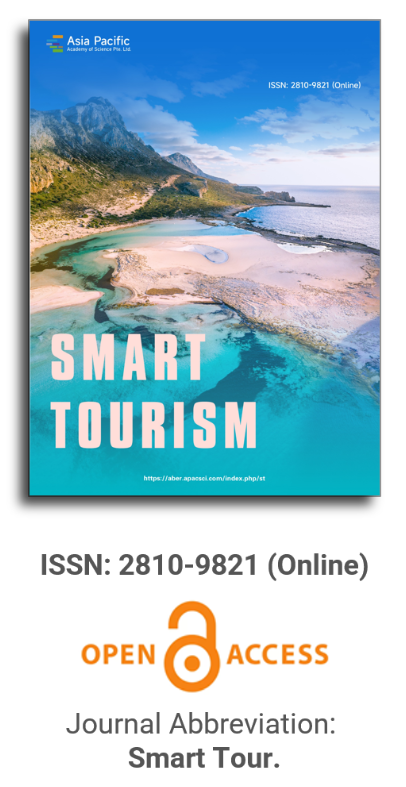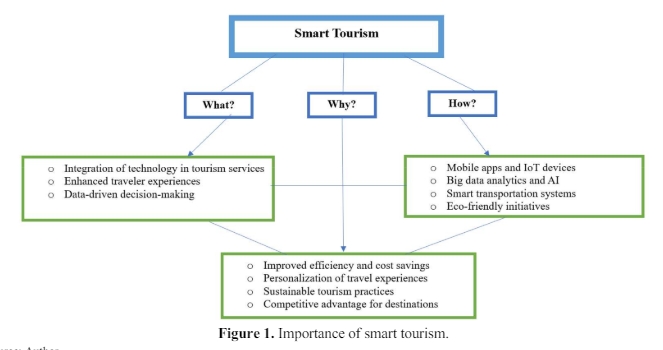


Exploring factors and customer perceptions of airport services: A quantitative textual analysis
Vol 5, Issue 1, 2024
Download PDF
Abstract
This study conducted an analysis of 1500 user generated content from Google Travel to examine the factors influencing airport services and customer perceptions. Quantitative textual analysis is employed to extract meaningful insights. Our findings highlighted the most frequently used words in airport user generated content, reflecting critical aspects of airport experiences such as the airport itself, the quality of service, and international travel. A cluster analysis revealed five distinct clusters, representing flight operations, location, views, customer feelings, and intangible services. A co-occurrence network analysis showed strong correlations among keywords associated with positive experiences, underscoring the importance of service quality and infrastructure in customer satisfaction. Furthermore, through topic modeling, we categorized words into five distinct groups: airport flights, ground services, international services, customer experience, and location. The practical implications of this study are substantial. The insights can help airport management identify strengths and areas needing improvement, ultimately enhancing customer satisfaction and the overall airport experience.
Keywords
References
- Wadud Z. Simultaneous Modeling of Passenger and Cargo Demand at an Airport. Transportation Research Record: Journal of the Transportation Research Board. 2013; 2336(1): 63-74. doi: 10.3141/2336-08
- Dhaka Airport. Available online: https://www.dhaka-airport.com/ (accessed on 3 January 2024).
- IATA. The importance of air transport to the air transport sector makes a major contribution to UAE’s economy Air transport facilitates flows of goods, investment and people. IATA. 2018; 1-4.
- Civil Aviation Authority of Bangladesh. Available online: http://caab.gov.bd/airports/shahjalal.html (accessed on 3 January 2024).
- Adeniran A, Fadare S. Relationship between passengers’ satisfaction and service quality in murtala muhammed international airport, Lagos, Nigeria. Int J Res Ind Eng. 2018; 7(3). doi: 10.22105/riej.2018.134686.1045
- Halpern N, Mwesiumo D. Airport service quality and passenger satisfaction: The impact of service failure on the likelihood of promoting an airport online. Research in Transportation Business & Management. 2021; 41: 100667. doi: 10.1016/j.rtbm.2021.100667
- Bezerra GCL, Gomes CF. Measuring airport service quality: A multidimensional approach. Journal of Air Transport Management. 2016; 53: 85-93. doi: 10.1016/j.jairtraman.2016.02.001
- Fodness D, Murray B. Passengers’ expectations of airport service quality. Journal of Services Marketing. 2007; 21(7): 492-506. doi: 10.1108/08876040710824852
- Pabedinskaitė A, Akstinaitė V. Evaluation of the Airport Service Quality. Procedia - Social and Behavioral Sciences. 2014; 110: 398-409. doi: 10.1016/j.sbspro.2013.12.884
- Lubbe B, Douglas A, Zambellis J. An application of the airport service quality model in South Africa. Journal of Air Transport Management. 2011; 17(4): 224-227. doi: 10.1016/j.jairtraman.2010.08.001
- Shadiyar A, Ban HJ, Kim HS. Extracting Key Drivers of Air Passenger’s Experience and Satisfaction through Online Review Analysis. Sustainability. 2020; 12(21): 9188. doi: 10.3390/su12219188
- Ban HJ, Kim HS. Understanding Customer Experience and Satisfaction through Airline Passengers’ Online Review. Sustainability. 2019; 11(15): 4066. doi: 10.3390/su11154066
- Barakat H, Yeniterzi R, Martín-Domingo L. Applying deep learning models to twitter data to detect airport service quality. Journal of Air Transport Management. 2021; 91: 102003. doi: 10.1016/j.jairtraman.2020.102003
- Kwon HJ, Ban HJ, Jun JK, et al. Topic Modeling and Sentiment Analysis of Online Review for Airlines. Information. 2021; 12(2): 78. doi: 10.3390/info12020078
- Sezgen E, Mason KJ, Mayer R. Voice of airline passenger: A text mining approach to understand customer satisfaction. Journal of Air Transport Management. 2019; 77: 65-74. doi: 10.1016/j.jairtraman.2019.04.001
- Bunchongchit K, Wattanacharoensil W. Data analytics of Skytrax’s airport review and ratings: Views of airport quality by passengers types. Research in Transportation Business & Management. 2021; 41: 100688. doi: 10.1016/j.rtbm.2021.100688
- Kuflik T, Minkov E, Nocera S, et al. Automating a framework to extract and analyse transport related social media content: The potential and the challenges. Transportation Research Part C: Emerging Technologies. 2017; 77: 275-291. doi: 10.1016/j.trc.2017.02.003
- Lee K, Yu C. Assessment of airport service quality: A complementary approach to measure perceived service quality based on Google reviews. Journal of Air Transport Management. 2018; 71: 28-44. doi: 10.1016/j.jairtraman.2018.05.004
- Öğüt H, Taş O. The Effect Of Online Reviews On Hotel Pricing. Mediterranean Conference on Information Systems (MCIS-2019). 2009.
- Wang Y, Kim J. Interconnectedness between online review valence, brand, and restaurant performance. Journal of Hospitality and Tourism Management. 2021; 48: 138-145. doi: 10.1016/j.jhtm.2021.05.016
- Bakır M, Akan Ş, Özdemir E, et al. How to Achieve Passenger Satisfaction in the Airport? Findings from Regression Analysis and Necessary Condition Analysis Approaches through Online Airport Reviews. Sustainability. 2022; 14(4): 2151. doi: 10.3390/su14042151
- Uysal AK, Gunal S. The impact of preprocessing on text classification. Information Processing & Management. 2014; 50(1): 104-112. doi: 10.1016/j.ipm.2013.08.006
- Sera, H. A corpus stylistic approach to Kazuo Ishiguro’s The Unconsoled: How do readers interpret and feel about the story? Journal of Cultural Science. 2022; 56: 75-101.
- Nunesa R, Carvalhoa IS. Arbutus unedo L. in literature, a bibliographic review and a case study for text mining using a combination of software programs to expedite the process. Ricardo Jorge Dos Santos Nunes. 2017; 33.
- Nattuthurai P. Content Analysis of Dark Net Academic Journals from 2010-2017 Using KH Coder. ACET Journal of Computer Education & Research. 2017; 12(1): 1-10.
- Song Y, Liu S, Liu X, et al. Automatic Taxonomy Construction from Keywords via Scalable Bayesian Rose Trees. IEEE Transactions on Knowledge and Data Engineering. 2015; 27(7): 1861-1874. doi: 10.1109/tkde.2015.2397432
- Chakraborty V, Chiu V, Vasarhelyi M. Automatic classification of accounting literature. International Journal of Accounting Information Systems. 2014; 15(2): 122-148. doi: 10.1016/j.accinf.2014.01.001
- Kushima M, Yamazaki T, Araki K. Text data mining of the nursing care life log from electronic medical record. Lecture Notes in Engineering and Computer Science. 2019; 2239: 257-261.
- McIlroy S, Ali N, Hassan AE. Fresh apps: an empirical study of frequently-updated mobile apps in the Google play store. Empirical Software Engineering. 2016; 21: 1346-1370.
- Noerhartati E, Handani ND, Dhaneswara N. Exploring the Influence of Online Reviews on Sales. JWEE. 2023. doi: 10.28934/jwee23.34
- Gower JC. A Comparison of Some Methods of Cluster Analysis. Biometrics. 1967; 23(4): 623. doi: 10.2307/2528417
- Zhu M, Tanaka K, Akamatsu T. Visualizing the annual transition of ocean policy in Japan using text mining. Marine Policy. 2023; 155: 105754. doi: 10.1016/j.marpol.2023.105754
Supporting Agencies
Copyright (c) 2024 Mohammad Sayed Noor, Narariya Dita Handani
License URL: https://creativecommons.org/licenses/by/4.0/

This site is licensed under a Creative Commons Attribution 4.0 International License (CC BY 4.0).

Prof. Hung-Che Wu
Nanfang College, Guangzhou
China
Indexing & Archiving
Asia Pacific Academy of Science Pte. Ltd. (APACSCI) specializes in international journal publishing. APACSCI adopts the open access publishing model and provides an important communication bridge for academic groups whose interest fields include engineering, technology, medicine, computer, mathematics, agriculture and forestry, and environment.



.jpg)
.jpg)

.jpg)

